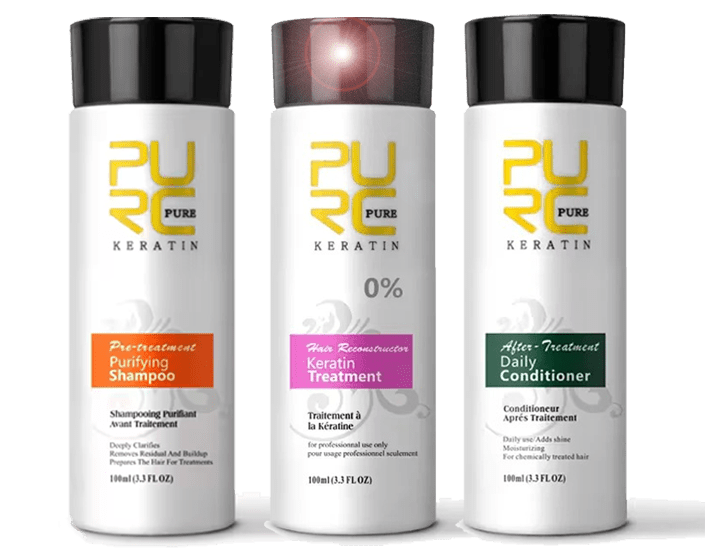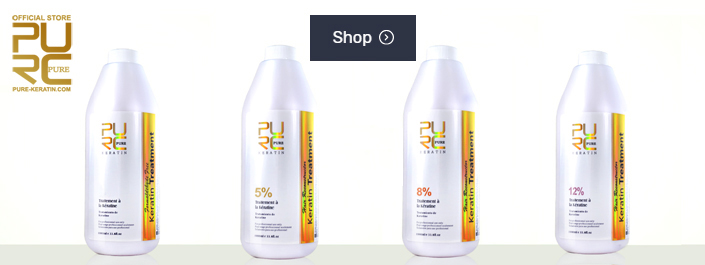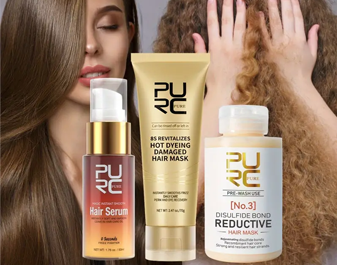Can I do a keratin treatment after coloring my hair?
KERATIN TREATMENT on 27th Aug 2024
Can I Do a Keratin Treatment After Coloring My Hair?
Introduction
- Overview of Keratin Treatments
- The Popularity of Hair Coloring
- The Big Question: Can They Be Done Together?
Understanding Keratin Treatments
Hair Coloring Basics
- Types of Hair Coloring Techniques
- The Impact of Hair Color on Hair Health
- Common Concerns with Coloring Hair
Combining Keratin Treatment and Hair Coloring
- The Best Sequence: Which Should Come First?
- Keratin Treatment Before Coloring
- Coloring Before Keratin Treatment
- How Time Between Treatments Affects Results
Potential Risks and Considerations
Expert Opinions and Recommendations
Tips for Maintaining Your Hair Post-Treatment
- Hair Care Routine After Keratin Treatment
- Products to Use and Avoid
- Protecting Your Hair Color After Treatment
Conclusion
FAQs
- How long should I wait between coloring and keratin treatment?
- Can I color my hair right after a keratin treatment?
- Will keratin treatment lighten or change my hair color?
- Is it safe to do a keratin treatment on bleached hair?
- How long do the effects of a keratin treatment last?
Introduction
If you've ever found yourself staring in the mirror, contemplating a vibrant new hair color while also dreaming of silky, smooth locks, you might wonder: "Can I do a keratin treatment after coloring my hair?" This question is common among hair enthusiasts who want the best of both worlds—color and smoothness. The answer, as with many things in beauty, isn't as straightforward as we'd like. In this article, we'll dive deep into the world of keratin treatments and hair coloring, exploring whether these two processes can coexist peacefully or if they should be kept apart.
Overview of Keratin Treatments
Keratin treatments have surged in popularity, promising to tame frizz, add shine, and make your hair more manageable. They're a go-to for anyone struggling with unruly hair or simply wanting that sleek, polished look without hours of styling.
The Popularity of Hair Coloring
On the other hand, hair coloring is a beloved way to express yourself, change your look, or cover up those pesky grays. From subtle highlights to bold, fashion-forward shades, hair color can transform your appearance in just a few hours.
The Big Question: Can They Be Done Together?
Now, the million-dollar question: Can you color your hair and still enjoy the benefits of a keratin treatment? The short answer is yes, but with some caveats. Let’s explore the details.
Understanding Keratin Treatments
What Is a Keratin Treatment?
Keratin is a protein that naturally occurs in your hair, skin, and nails. A keratin treatment is a chemical process that smooths and shines frizzy hair. The treatment works by infusing your hair with keratin, which fills in the porous spots in your hair, making it smoother and easier to manage.
How Does a Keratin Treatment Work?
The process usually involves applying a keratin-infused solution to your hair, blow-drying it, and then sealing it in with a flat iron. The result is hair that looks straighter, shinier, and healthier. Depending on your hair type and how well you care for it afterward, the effects can last anywhere from a few weeks to a few months.
Benefits of Keratin Treatments
Keratin treatments are known for several benefits:
- Frizz Reduction: Especially useful in humid climates.
- Smoothness and Shine: Hair looks healthier and more polished.
- Manageability: Cuts down on styling time.
Hair Coloring Basics
Types of Hair Coloring Techniques
Hair coloring isn't a one-size-fits-all process. There are various techniques, including:
- Permanent Color: Provides long-lasting results by altering your hair's natural pigment.
- Semi-Permanent Color: Offers a temporary change, ideal for those who want to experiment.
- Highlights/Balayage: Add dimension without a full-color commitment.
The Impact of Hair Color on Hair Health
While coloring your hair can be fun and transformative, it can also be damaging. The chemicals in hair dye, especially permanent dyes and bleaches, can weaken your hair, making it dry, brittle, and more prone to breakage.
Common Concerns with Coloring Hair
Some of the most common concerns people have when coloring their hair include:
- Damage: The harsh chemicals can strip your hair of moisture.
- Fading: Color can fade quickly, especially with frequent washing or sun exposure.
- Allergic Reactions: Some people may experience scalp irritation or allergic reactions to hair dye.
Combining Keratin Treatment and Hair Coloring
The Best Sequence: Which Should Come First?
If you're planning to do both treatments, you might wonder which to do first. Should you color your hair before the keratin treatment, or should it be the other way around?
Keratin Treatment Before Coloring
Doing a keratin treatment before coloring is generally not recommended. The treatment can create a protective layer on your hair, making it harder for the color to penetrate effectively. This can lead to uneven color or less vibrant results.
Coloring Before Keratin Treatment
Coloring your hair before a keratin treatment is usually the better option. The keratin treatment can help seal in the color, making it last longer and look more vibrant. However, it's crucial to wait a bit between the two processes.
How Time Between Treatments Affects Results
Timing is everything. Ideally, you should wait at least two weeks between coloring your hair and getting a keratin treatment. This waiting period allows your hair to recover from the dyeing process and ensures that the keratin treatment can bond properly to your hair.
Potential Risks and Considerations
Hair Damage and Repair
Both coloring and keratin treatments involve chemicals that can stress your hair. If your hair is already damaged or brittle, combining these treatments without adequate care can lead to further damage. It's essential to assess your hair's health and perhaps consult with a professional before undergoing both treatments.
Color Fading and Longevity
One of the main concerns when combining hair coloring and keratin treatments is color fading. Keratin treatments can sometimes cause slight color fading, especially in lighter shades. To minimize this risk, use color-safe products and avoid excessive heat styling.
How to Minimize Risks
To minimize the risks associated with combining these treatments, consider the following tips:
- Use Sulfate-Free Products: Sulfates can strip color and reduce the longevity of the keratin treatment.
- Avoid Heat Styling: Excessive heat can damage your hair further.
- Deep Conditioning: Regular deep conditioning treatments can help maintain your hair's health.
Expert Opinions and Recommendations
Insights from Hair Stylists
Many hair stylists recommend coloring your hair before getting a keratin treatment for the best results. They also emphasize the importance of waiting at least two weeks between the two treatments to allow your hair to recover and to ensure the best possible outcome.
What Professional Colorists Advise
Colorists often advise their clients to use color-safe shampoos and conditioners after a keratin treatment to maintain the vibrancy of the color. They also recommend avoiding excessive washing, as this can lead to faster fading.
Real-Life Experiences
Many individuals who have tried both treatments report that their hair feels healthier and the color lasts longer when they color their hair before doing a keratin treatment. However, results can vary based on hair type, the products used, and how well you care for your hair afterward.
Tips for Maintaining Your Hair Post-Treatment
Hair Care Routine After Keratin Treatment
After undergoing a keratin treatment, it's crucial to adopt a hair care routine that maintains the benefits of the treatment while also preserving your color. Here are some tips:
- Use a Sulfate-Free Shampoo: Sulfates can strip the keratin from your hair.
- Limit Hair Washing: Washing your hair too frequently can shorten the lifespan of the treatment.
- Avoid Heat Styling: Excessive heat can damage your hair and reduce the treatment’s longevity.
Products to Use and Avoid
Post-treatment care also involves being mindful of the products you use:
- Use: Sulfate-free shampoos and conditioners, leave-in conditioners, and heat protectants.
- Avoid: Products containing alcohol, sulfates, or high levels of salt.
Protecting Your Hair Color After Treatment
If you've colored your hair, protecting that color after a keratin treatment is essential. Use products specifically designed for color-treated hair, and avoid over-washing or exposing your hair to direct sunlight without protection.
Conclusion
In conclusion, yes, you can do a keratin treatment after coloring your hair, but it requires careful planning and timing. The sequence in which you perform these treatments and the products you use play crucial roles in the health and appearance of your hair. By following the tips and expert advice outlined in this article, you can enjoy both vibrant color and smooth, manageable hair.
FAQs
How long should I wait between coloring and keratin treatment?
It's best to wait at least 2 weeks between coloring your hair and doing a keratin treatment to ensure optimal results and avoid damage.
Can I color my hair right after a keratin treatment?
While it’s possible, it’s not recommended. Coloring hair right after a keratin treatment can affect the vibrancy of the color and may not yield the best results.
Will keratin treatment lighten or change my hair color?
Keratin treatments can sometimes cause slight color fading, particularly with lighter shades. It's important to use color-safe products afterward.
Is it safe to do a keratin treatment on bleached hair?
Yes, but extra caution is needed. Bleached hair is more vulnerable to damage, so make sure your hair is healthy enough before proceeding with a keratin treatment.
How long do the effects of a keratin treatment last?
The effects of a keratin treatment typically last between 3 to 5 months, depending on your hair type and aftercare routine.



















